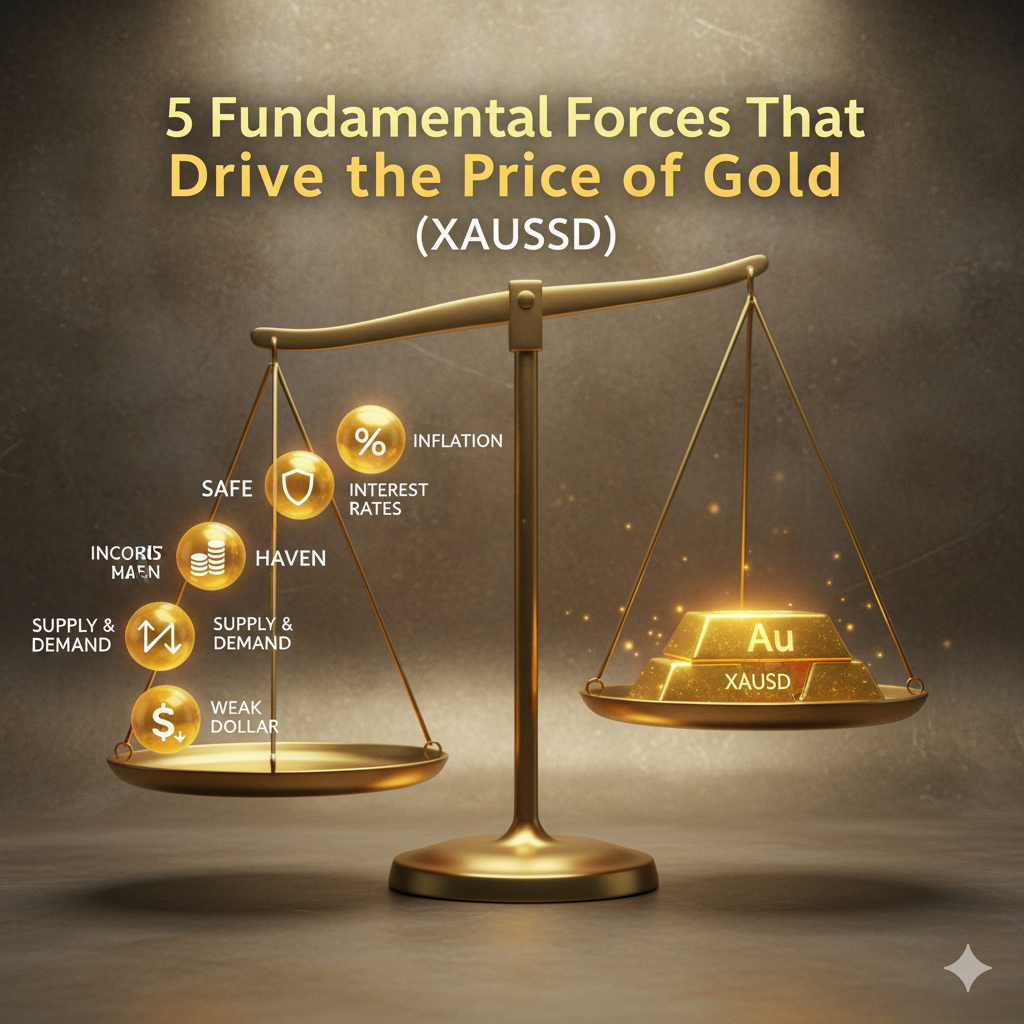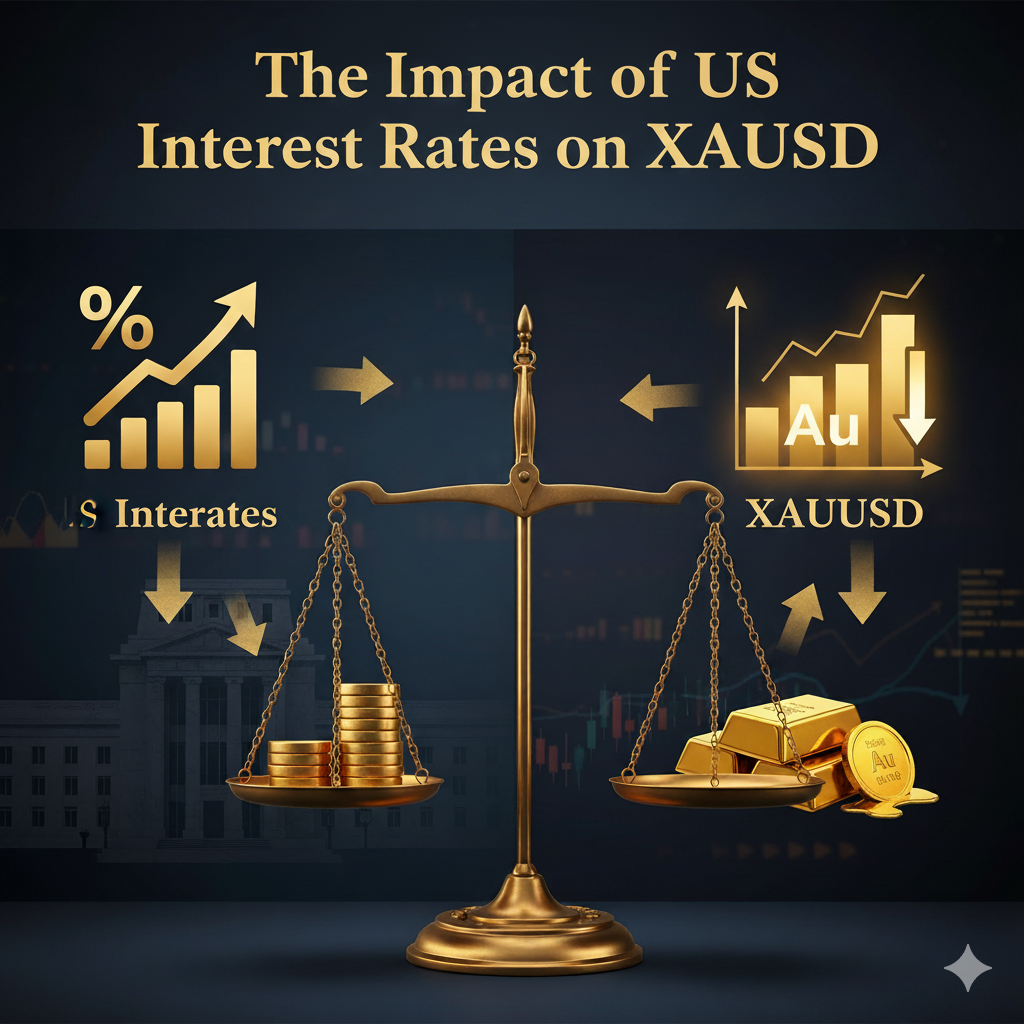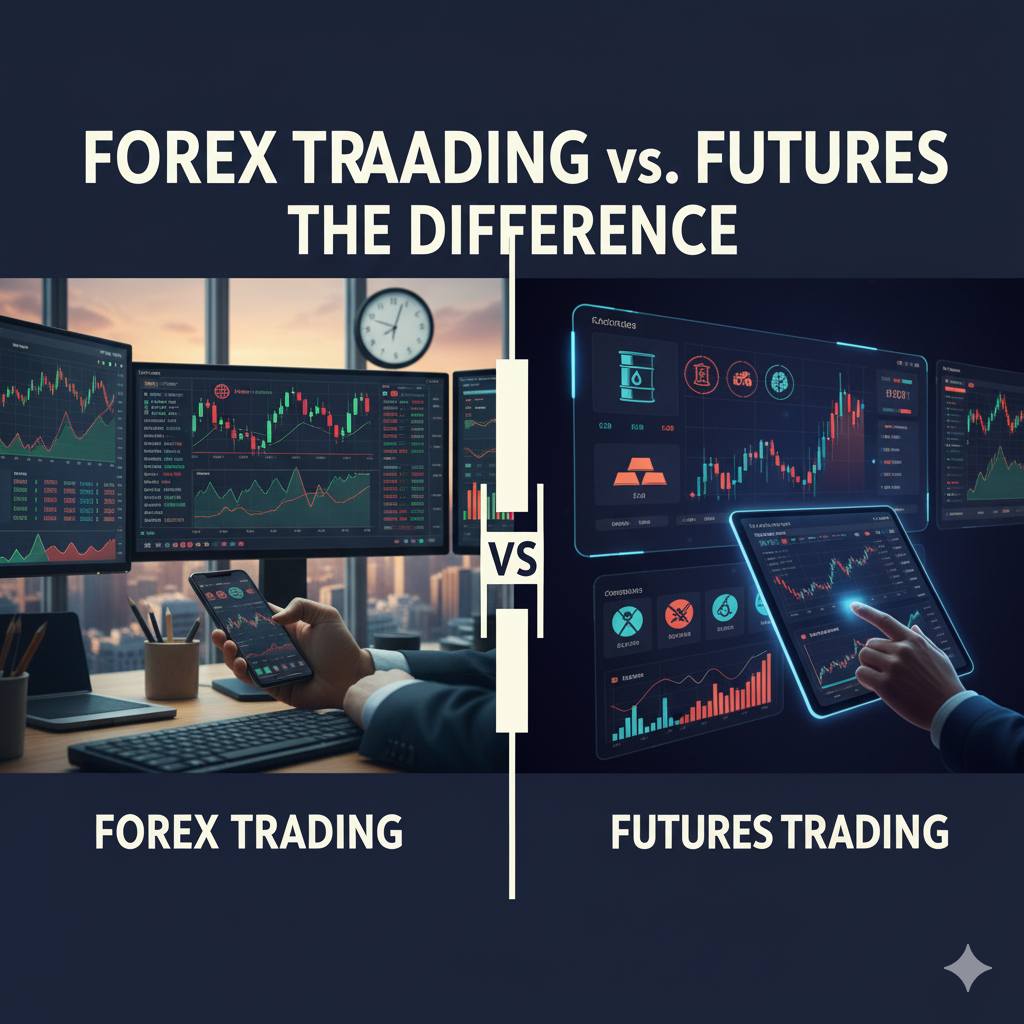Gold has been a global trendsetter for risk, value, and investor confidence. As such, investors and traders of XAUUSD need to know the underlying drivers of its price changes. The following are the 5 fundamental forces that drive the price of gold (XAUUSD) and its direction.
Real Interest Rates and Inflation
Real interest rates, nominal rates, and less inflation lie at the core of gold’s appeal. Investing in non-yielding assets like gold is comparatively more appealing when real rates are low or negative. On the other hand, at higher real rates, the opportunity cost of holding gold will tend to put downward pressure on its price, leading to a downward spiral. Investing expectations matter too: if investors anticipate persistent inflation, they may turn to gold as an insurance product, driving demand further up the market.
US Dollar Strength
It is one of the 5 fundamental forces that drive the price of gold (XAUUSD). The opposite direction of gold and the US dollar is usually observed. When the dollar strengthens, it becomes more expensive for holders of other currencies, leading to lower demand and falling prices. Nonetheless, a weak US currency resulting from monetary easing or deficit spending is normally inclined to stimulate gold, as international buyers will consider it cheaper and central banks will raise their reserves.
Central Bank Buying and Reserves Policy
Central banks are necessary in the long-term aspect of the gold market. Their purchases will generate enduring upward price pressure when they diversify beyond fiat currencies in accumulating reserves or when they are confronted with geopolitical uncertainty that drives them towards buying bullion. In contrast, selling or lending reserves might introduce a supply and thereby curb price increases.
Geopolitical Risk and Market Uncertainty
Gold has earned a reputation as a haven. Political instability, war, or even extreme financial strains prompt investors to seek solace in gold as a means of stability, particularly when liquidity requirements are at their peak. Crises, as a potential insurance solution, usually stimulate flows into bullion beyond what its fundamentals might suggest.
Physical Demand from Jewelry Markets
Jewelry markets in Asia exert tremendous control over price dynamics. Seasonal festivals, weddings, and cultural preferences often cause surges in the off-take of jewelry products, while industrial technology use tends to remain stable. Investment demand through ETFs or bars usually leads to rapid price movements, resulting in volatile price reactions.
5 Fundamental Forces That Drive the Price of Gold (XAUUSD): Traders Need to Monitor Carefully
A single factor can never determine the price of gold; instead, it is dynamically determined by a combination of real rates, dollar volatility, central bank actions, geopolitical risk, and physical demand, which interact to shape the behavior of XAUUSD. Traders need to monitor how these forces interact carefully. An increase in dollar strength might be offset by central bank buying, while weak rates could increase safe-haven flows. Keeping an eye on both will make the analysis of gold more resilient and grounded. Neuron Markets, a trustworthy platform, can provide you with all the necessary materials on trade education, gold factors, and strategies to help you complete your trade plan confidently. Be careful not to chase one signal and treat gold as part of an overall balanced portfolio strategy at all times.



